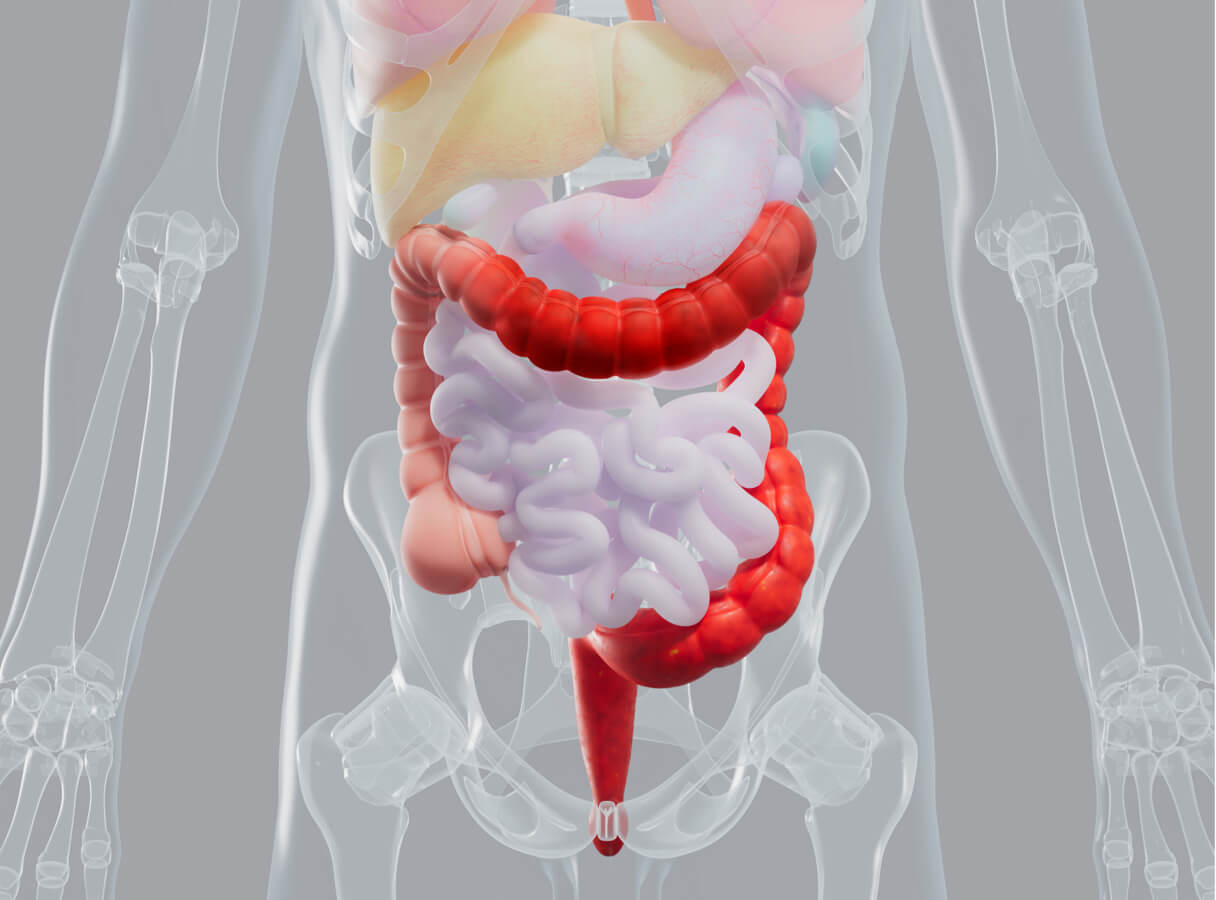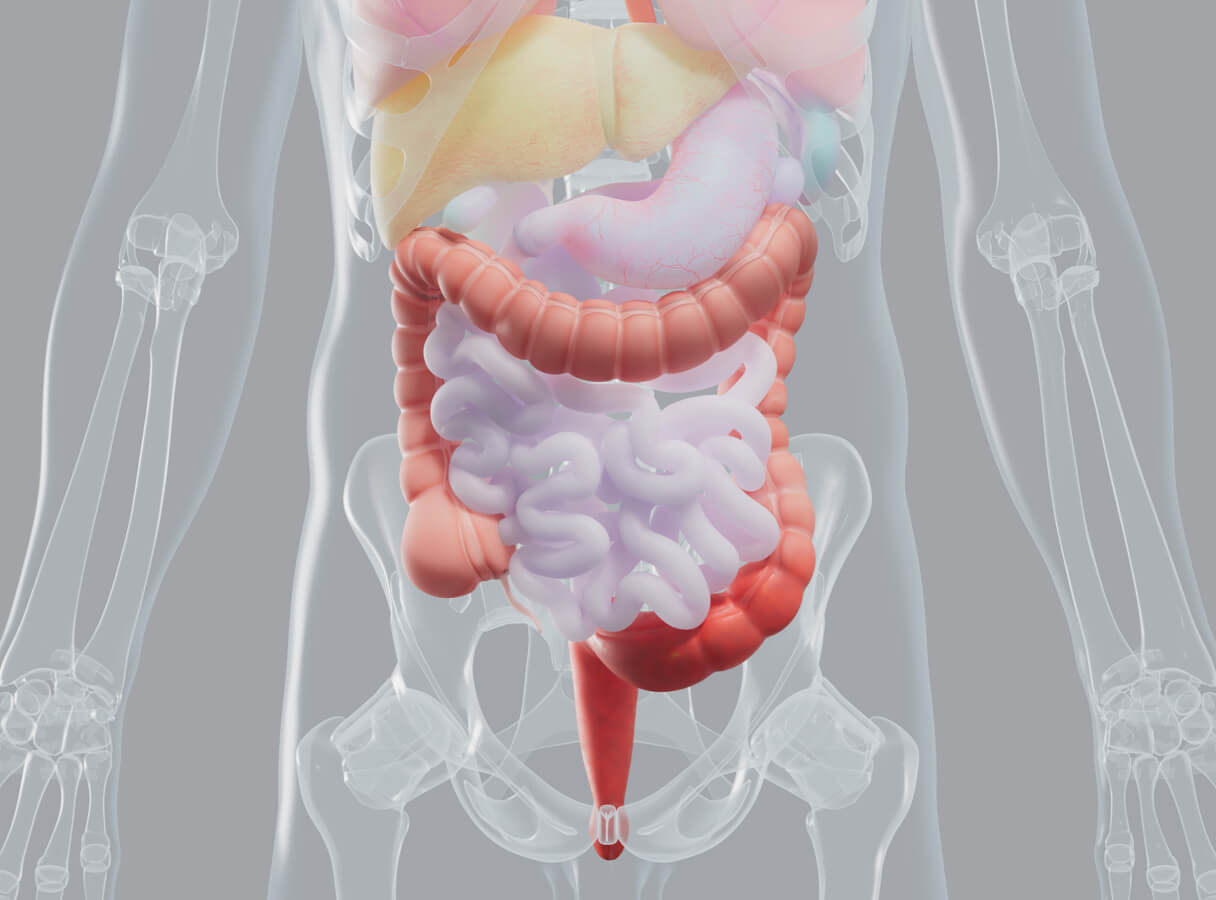For adults with moderate to severe ulcerative colitis (UC) in whom TNF blockers did not work well

for ulcerative
colitis treatment
Set your long-term treatment goals
When it comes to moderate to severe UC, you shouldn’t have to choose between relief that's fast and relief that lasts.
That’s why it’s important to:

think beyond symptom relief

strive for lasting, steroid-free remission

aim to visibly repair the colon lining
Symptom relief
Look for UC treatment options that can provide rapid relief from frequent bowel movements and bloody stools. Plus one that helps fight symptoms like bowel urgency, abdominal pain, and fatigue. But don’t stop there…

Lasting, steroid-free remission
Consider ulcerative colitis treatment options that can help you achieve lasting, steroid-free remission—even at 1 year. Ulcerative colitis remission means you are experiencing few or no UC symptoms and your colon lining has visibly repaired as seen in endoscopy results.
Visible repair of the colon lining
Ask about UC treatments that can help the body to visibly repair the colon lining and achieve steroid-free remission.
Uncontrolled UC can cause damage to the colon lining. A visibly repaired colon lining is a key component in achieving remission. The appropriate treatment can reduce the inflammation affecting the lining of the colon.
See the difference between UC damage and
visible colon lining repair*
Click to compare
UC inflammation is something your gastroenterologist can see during an endoscopy. In a patient with moderately to severely active UC, endoscopy can show a damaged colon with a reddish appearance, erosions, and white patches, indicating bleeding, inflammation, and ulcers. Ask your doctor if an endoscopic image like this can mean your treatment isn’t working.
UC inflammation is something your gastroenterologist can see during an endoscopy. In a patient with moderately to severely active UC, endoscopy can show a damaged colon with a reddish appearance, erosions, and white patches, indicating bleeding, inflammation, and ulcers. Ask your doctor if an endoscopic image like this can mean your treatment isn't working.
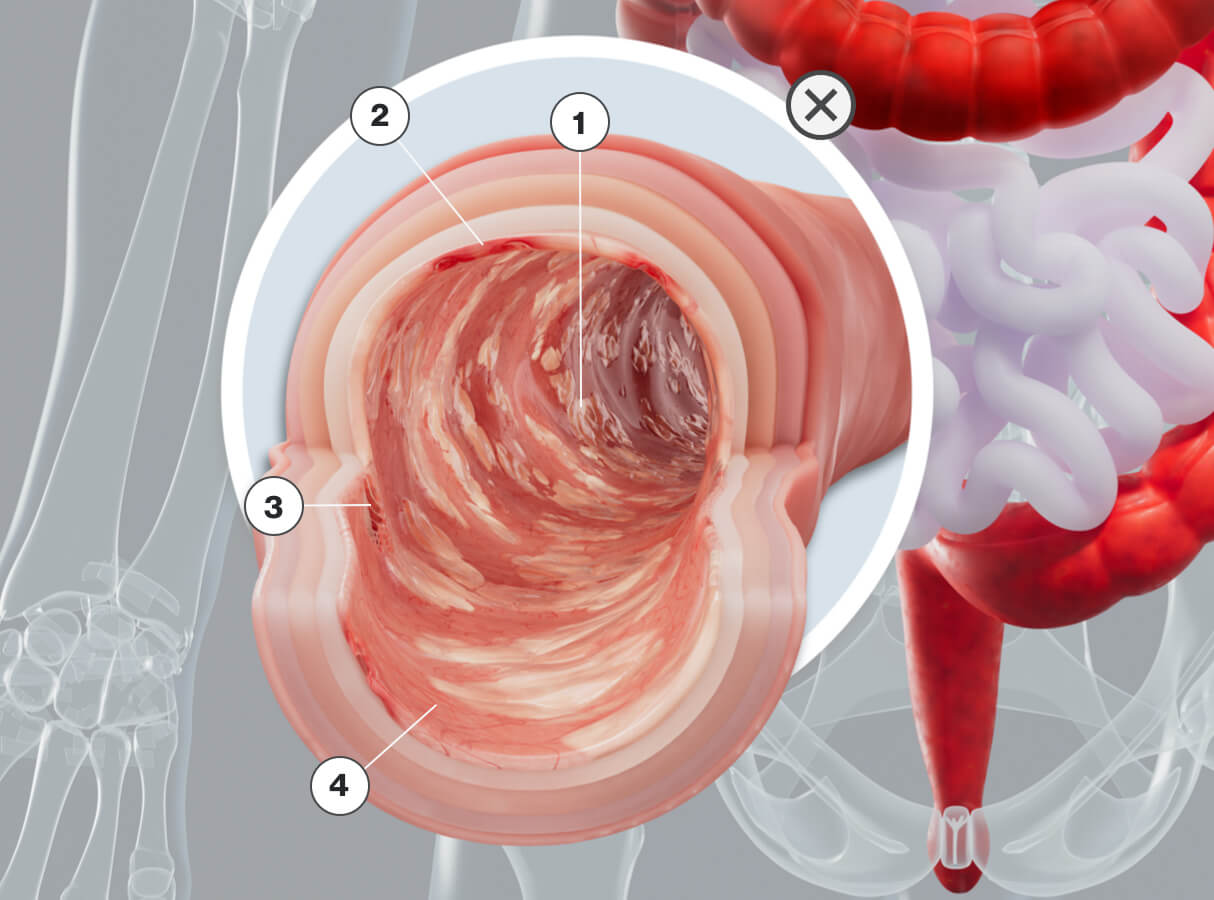
1 Ulcers
3 Bleeding
2 Redness
4 Surface inflammation
UC inflammation is something your gastroenterologist can see during an endoscopy. In a patient with moderately to severely active UC, endoscopy can show a damaged colon with a reddish appearance, erosions, and white patches, indicating bleeding, inflammation, and ulcers. Ask your doctor if an endoscopic image like this can mean your treatment isn't working.
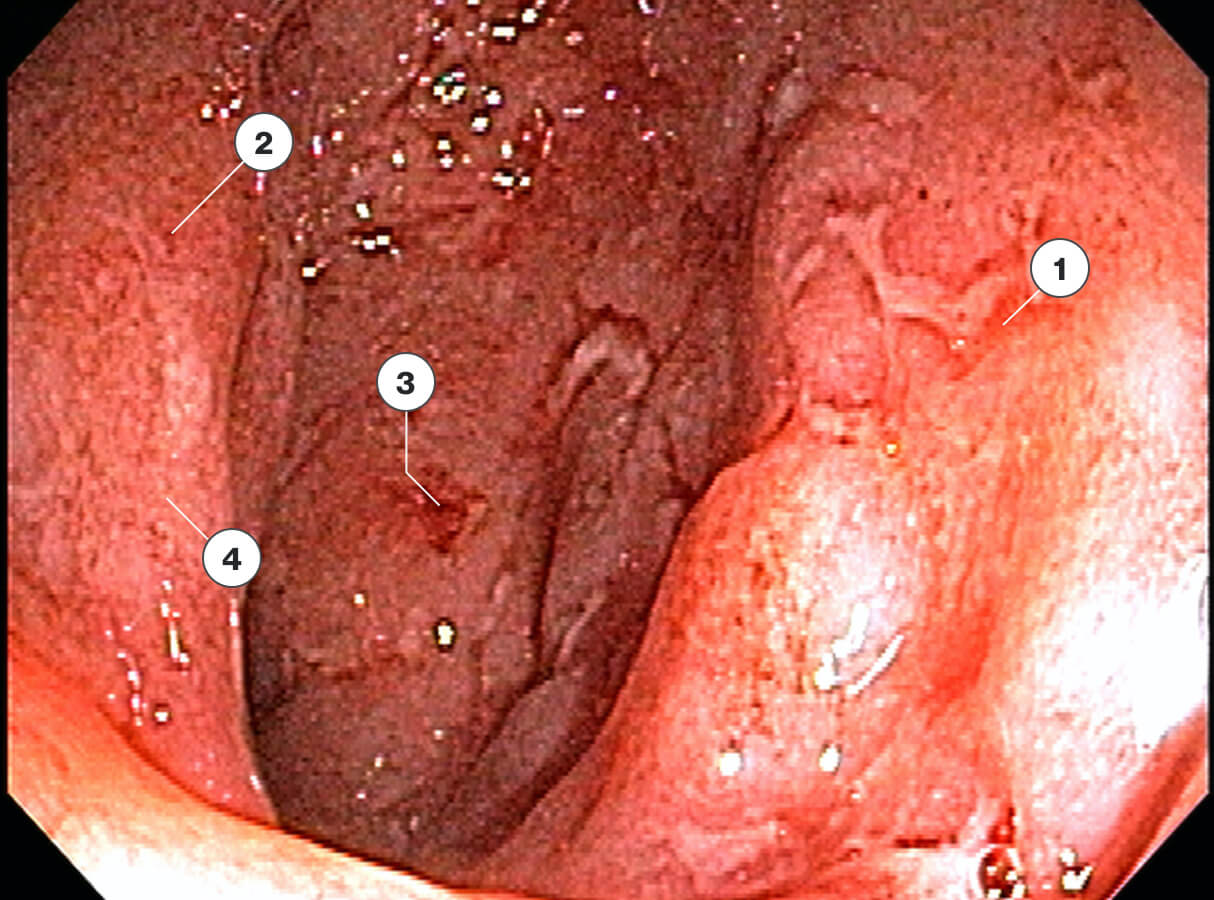
1 Ulcers
3 Bleeding
2 Redness
4 Surface inflammation
Your gastroenterologist can also see visible colon lining repair during an endoscopy. An endoscopy of a patient with a visibly repaired colon lining shows a normal colon lining with a pink appearance and minimal ulcers, indicating that the treatment is working well. Ask your doctor how you can achieve visible colon lining repair.
Your gastroenterologist can also see visible colon lining repair during an endoscopy. An endoscopy of a patient with a visibly repaired colon lining shows a normal colon lining with a pink appearance and minimal ulcers, indicating that the treatment is working well. Ask your doctor how you can achieve visible colon lining repair.
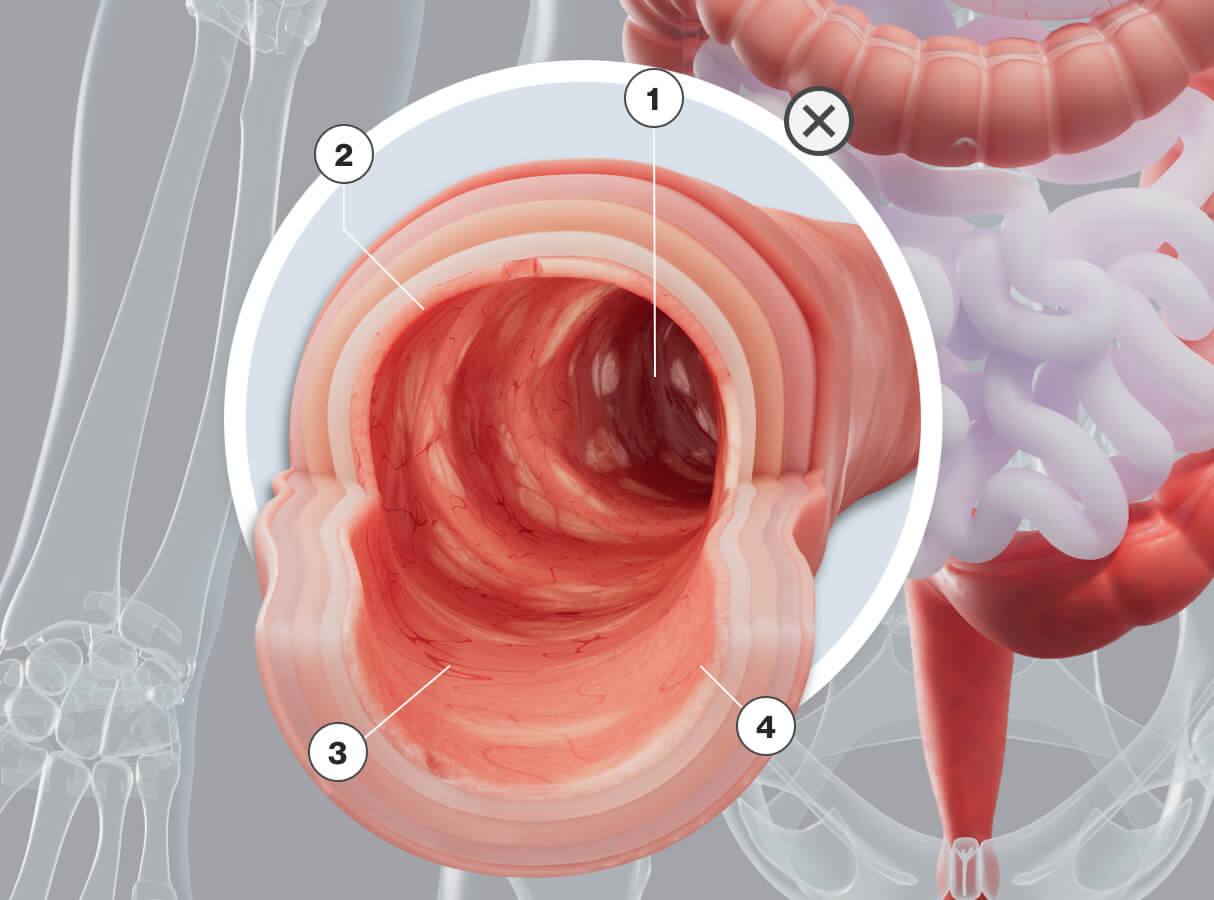
1Absence of ulcers
3Less bleeding
2Less redness
4Smooth lining
Your gastroenterologist can also see visible colon lining repair during an endoscopy. An endoscopy of a patient with a visibly repaired colon lining shows a normal colon lining with a pink appearance and minimal ulcers, indicating that the treatment is working well. Ask your doctor how you can achieve visible colon lining repair.
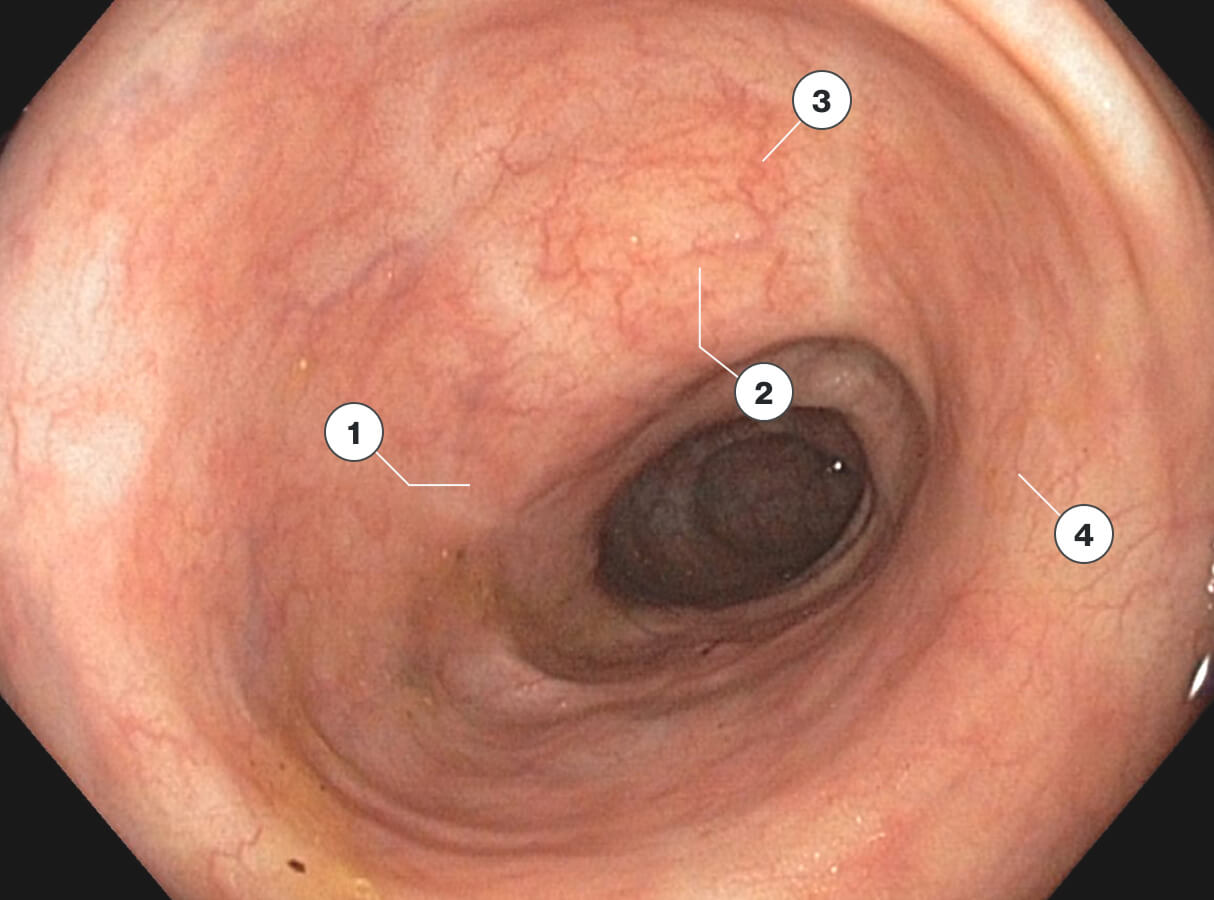
1Absence of ulcers
3Less bleeding
2Less redness
4Smooth lining
*The images above are shown for educational purposes only to illustrate a damaged colon and visible colon lining repair. Degree and location of UC damage and repair will differ by patient. Areas that were visually assessed may not represent repair of the entire colon lining. Images are not of RINVOQ patients. Results are consistent with RINVOQ clinical trials.
In clinical studies of patients who responded† to RINVOQ at 8 weeks, many people with UC achieved visible colon lining repair‡ at 8 weeks and even 1 year.
†Clinical response based on frequency of bowel movements, fewer bloody stools, and endoscopy results.
‡Areas that were visually assessed may not represent repair of the entire colon lining.
You should know the potential benefits and risks of RINVOQ before making any treatment decisions. Learn more about RINVOQ side effects.
Ask yourself...
What might remission and visible colon lining repair look like in your day-to-day life?
Do your UC symptoms keep you from doing things you enjoy? Maybe you're interested in taking a camping trip, or want to run errands without constant bathroom breaks.
That's why setting the right treatment goals can make all the difference.
Hear from RINVOQ patients
Meet real patients who were all looking to put their UC in check.

Watch our UC patient podcast
Patients ask other patients how they tackle common treatment challenges.
See how Jacorrian put UC in check
I can focus on working on projects without having to worry about darting back and forth from my computer to the nearest restroom.
—JACORRIAN, moderate to severe UC patient
Explore what’s important to you in Choosing a UC Treatment >
Take charge: More topics for you
Find a gastroenterologist near you
Team up with a specialist who can help you go beyond temporary symptom relief.
See RINVOQ in action
RINVOQ UC clinical study results won't back down—neither should you.


